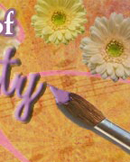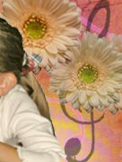Everyone has the capacity to improve his/her creative problem-solving skills. Worldwide awareness of intellectual potential in gifted children is growing, especially in business.
In this course you have learned:
- The importance of the self-actualized person and how society benefits from them and that everyone has the capacity to improve his/her creative problem-solving skills
- Barriers and blocks to creative endeavors in school and business, including social, cultural, economic, personal and educational experiences
- Definitions of creativity and the elements of creativity and have come up with your own
- Characteristics of creative people, especially the eminent ones
- The CPS model
- Programs, strategies, and techniques that develop creativity
- Strategies used by creative people
- Edward De Bono’s lateral thinking and six hats techniques to solve problems
- Creativity measurements and tests that help understand the creative process and how individuals create
- Creative dramatics and interdisciplinary arts contribute to more fluent thinking
- To integrate creativity across content areas, focusing on process and product
- How creative thinking can be used to address problems in our society
Bottom line . . . educating gifted students through a creative approach stimulates their learning and makes them better thinkers and problem solvers!!!
In Conclusion
We are still seeking the same creative guidance today as we did back in the time of Leonardo Da Vinci. In fact, almost 500 years ago Da Vinci said, “Men of genius sometimes accomplish most when they work the least, for they are thinking out inventions and forming in their minds the perfect idea that they subsequently express with their hands.” Creativity needs time, and lots of it, before a true creative thought or product can emerge.
 This eight-week course addressed tons of information about creativity. If you are feeling a little overwhelmed, don’t worry! It is okay to have doubts. This video provides perspective on teaching creativity, and reassurance that you have the tools at your disposal to be successful. Click on the daisy to launch the video.
This eight-week course addressed tons of information about creativity. If you are feeling a little overwhelmed, don’t worry! It is okay to have doubts. This video provides perspective on teaching creativity, and reassurance that you have the tools at your disposal to be successful. Click on the daisy to launch the video.Since the dawning of mankind, man has sought ways to best express thoughts, dreams, and fears. Inspiration, passion, and natural curiosity are the measures we use to express ourselves creatively. When we, as educators and parents, nurture in our children a desire to create, we ensure a future of innovation, invention, and independence. Future artists, poets, scientists, writers, architects, lawyers, doctors, engineers, teachers, or politicians who will shape our tomorrow are all around us. It’s important to incorporate the creative process into a gifted child’s learning environment, especially in this era of educational accountability and emphasis on standardized testing! The world looks to the West and especially the United States for new ideas and innovation. As Barak Obama said, “All things are possible in this country.” Educators need to make sure our gifted students have the tools to compete in a global economy and the emotional stability to allow them to succeed.
Leadership is about empathy. It is about having the ability to relate and to connect with people for the purpose of inspiring and empowering their lives. - Oprah Winfrey






